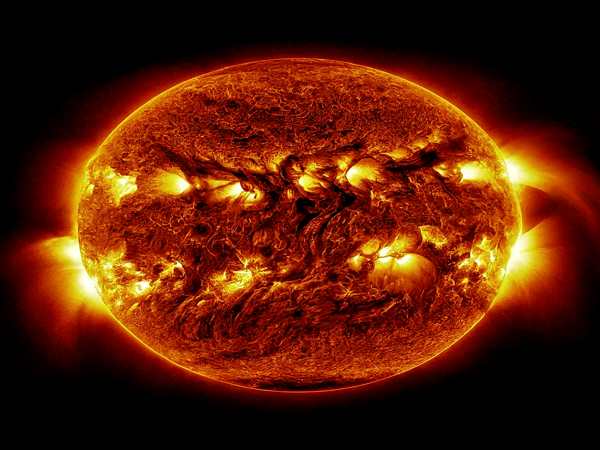Imagine a world plunged into darkness. Not a power outage from a downed line, but a complete collapse of electrical grids across continents. This chilling scenario could be triggered by a powerful solar storm, a natural phenomenon that packs the punch of a nuclear bomb.
Electromagnetic Pulse (EMP): A Double Threat
An EMP, or electromagnetic pulse, is a burst of intense energy that disrupts electronics. While a nuclear detonation is the most potent source of EMP, the Sun can also unleash these invisible shockwaves through solar flares and coronal mass ejections (CMEs).
The 1859 Carrington Event offers a glimpse of a powerful solar storm’s impact. Back then, rudimentary telegraph systems were knocked out, and auroras, typically confined to the polar regions, were visible as far south as Cuba.
Modern Day Vulnerability:
Fast forward to today. Our dependence on electricity and interconnected networks makes us far more susceptible to a major solar storm. Delicate electronics – computer chips, power grids, communication satellites – are everywhere, creating a web of potential vulnerabilities.
The Domino Effect:
Imagine a powerful solar storm striking Earth. The initial EMP could cripple power grids, plunging cities into darkness. Communication networks could collapse, disrupting emergency services and vital communication channels. Transportation, heavily reliant on computer systems, might grind to a halt. Hospitals, with their dependence on life-saving equipment, would be thrown into chaos.
A Modern Achilles’ Heel:
Even seemingly simple things like your car are vulnerable. Modern vehicles rely on complex computer systems for engine management and safety features. A strong EMP could potentially disable these systems, leaving vehicles inoperable and transportation networks paralyzed.
Preparing for the Perfect Storm:
The good news? We’re not entirely helpless. Scientists are actively studying solar activity, helping us predict and prepare for potential storms. Additionally, research is ongoing to develop shielding technologies and hardening critical infrastructure against EMP effects.
The Call to Action:
While the likelihood of a catastrophic solar storm may seem remote, the potential consequences are dire. Raising awareness, investing in protective measures, and prioritizing critical infrastructure resilience are crucial steps in mitigating this potential threat.
Remember, the Sun may be a life-giving star, but its immense power also holds the potential for disruption. By understanding the threat of solar storms and taking proactive measures, we can safeguard our tech-reliant world from the darkness of a modern-day technological blackout.

